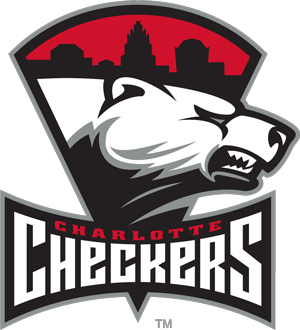With the NHL Draft coming up this Friday, all eyes will be focused on Sunrise, Florida, where teams will be aiming to select the backbone of their franchises for years to come. And while these young prospects’ journeys may start with their name being called on Draft Night, for many that journey will make its way through the AHL.
In five seasons as the top affiliate for the Carolina Hurricanes, the Charlotte Checkers have seen their fair share of prospects come through the Queen City. Of the 130 players selected by the Hurricanes since the franchise relocated from Hartford in 1997, 27 percent have donned a Checkers jersey at some point, with 18 percent spending their rookie year in Charlotte.
The benefit of developing prospects in the AHL is well-documented and has been especially true for the Carolina organization. Three of the top four Hurricanes scorers last season spent time in Charlotte, ranging from short stints (Elias Lindholm’s six games) to long (Victor Rask’s entire rookie campaign), as did 17 of the 28 skaters to appear for Carolina.
Those numbers seem to back up how positive of an asset the Checkers have been to the organization.
The biggest benefit that Charlotte offers, and one that former head coach Jeff Daniels stressed endlessly last season, is the ability to aid the transition to the pro game for these young players, in all aspects. That jump to the next level can be a challenging one. Being able to get their feet wet at the AHL level and “learn how to be a pro”, as Daniels was fond of saying, is a crucial positive for everyone involved, especially off the ice.
For many of the first-year players coming in, it’s their first time living on their own, and that comes with its own acclimation. Last season, rookie roommates Brock McGinn and Trevor Carrick often credited veteran Kyle Hagel with helping them adjust off the ice, from helping them shop for groceries and cook to giving them workout advice. Turning pro is just as big of a leap off the ice, and a stop in Charlotte can help smooth that transition. Learning the pro game here can give those players the confidence for when they are eventually recalled to the big leagues.
On the ice, players are able to navigate that gap from the junior/college level with time in the AHL. Getting early NHL experience is obviously a huge plus, but in the AHL those players are often given increased ice time and a bigger role than what they might see right away at the NHL level.
It was evident last season with someone like Phil Di Giuseppe, whose development was strongly enforced by playing a full 76-game slate in his rookie year. Coming from the college ranks, where teams play 20-30 games a season and only once or twice a week, the ability to come in and log lots of ice time right away helped build the young forward in a very visible way, as his offensive prowess began to shine as the season wore on. Add to that the attention they are paid during practice, whether it be from the Checkers’ coaching staff or the various Hurricanes’ personnel who frequently stopped by, and it is evident that this is a hugely beneficial route to get many prospects properly equipped for their NHL debuts.
The 2014-15 season was somewhat an anomaly in the sheer amount of rookies that played an integral role, but the idea remains to let them work through the ups and downs that come with the pro game. It was a tough year for the Checkers and those young skaters took their lumps, but the overall experience will, ideally, help shape them into stronger players as they prepare to take that next step to the NHL.
And with a track record like the Checkers’, you could be looking at the future of the Hurricanes for years to come.






